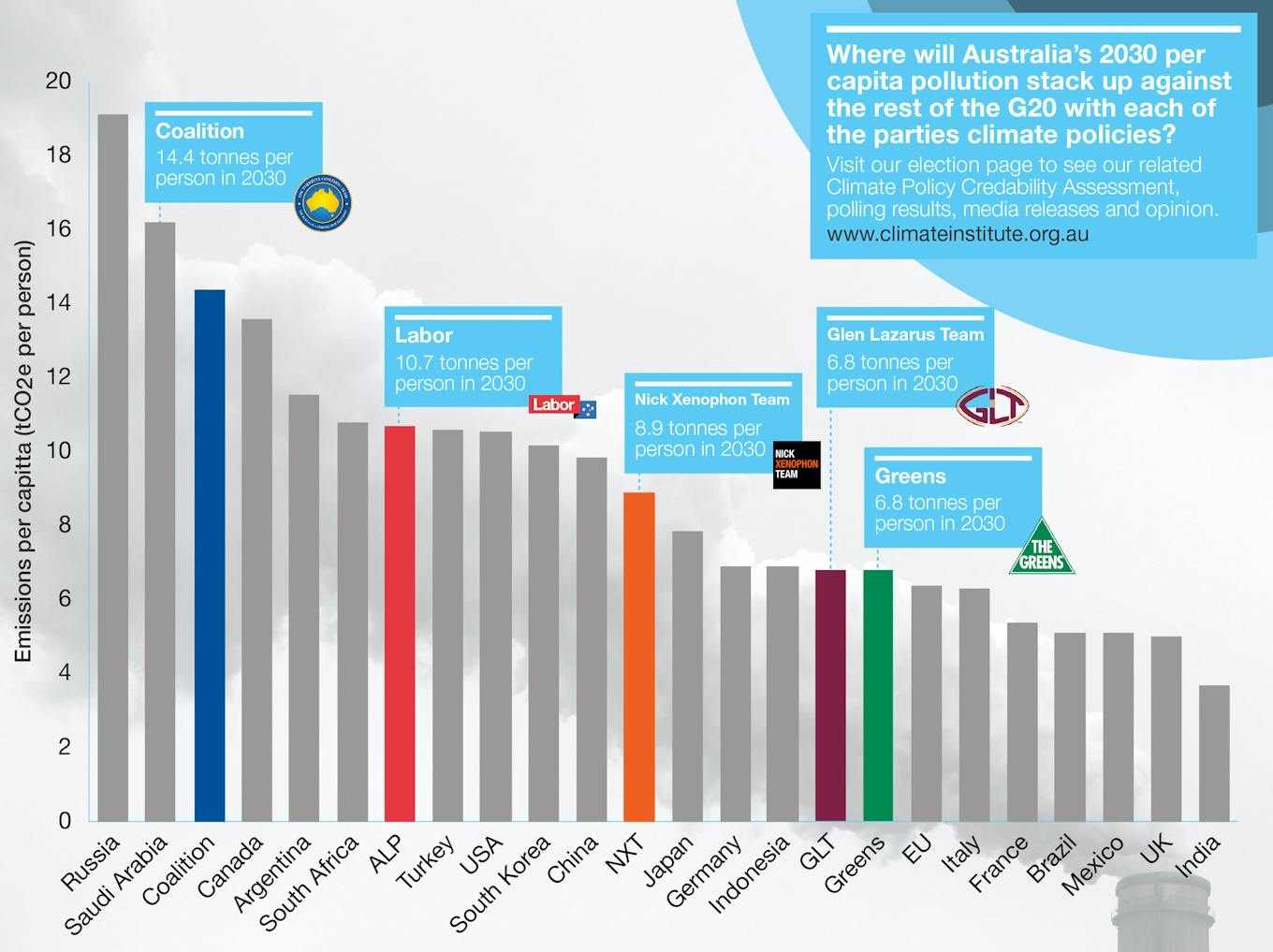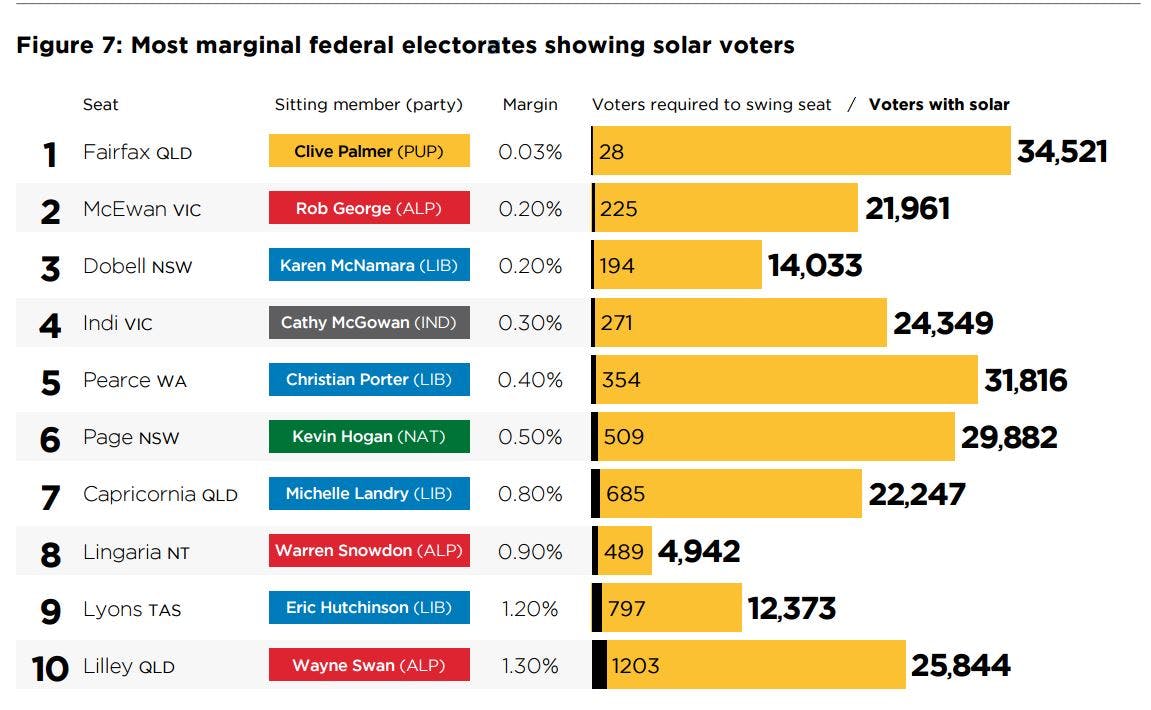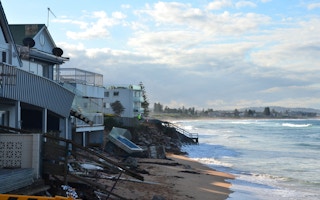With just over a week before Australia goes to the polls, new reports show that party policies on reducing greenhouse gas emissions and supporting renewable energy will play a decisive role in shaping the outcome of the federal election.
Sydney-based think-tank The Climate Institute (TCI) on Wednesday released its Climate Policy Credibility Assessment, highlighting a gap between voter expectations on climate policy and what parties have promised so far.
In a separate State of Solar 2016 report published on the same day, community advocacy group Solar Citizens found that homeowners with rooftop solar installations are a growing voter base, and in many constituencies, their votes could be enough to oust the current Member of Parliament.
TCI, through a recent poll of 1,100 Australians aged 18 and above, found that 72 per cent of Australians today are concerned about climate change, compared with 53 per cent in 2013.
While the Malcolm Turnbull-led ruling Coalition party saw climate concern among its supporters spike from 41 per cent in 2013 to 62 per cent today, it is the people who do not yet know who they will vote for come July 2 who are the most eager to see strong climate action - 76 per cent of undecided voters are concerned about the issue.
TCI noted that businesses and financiers, too, are increasingly frustrated by uncertainty around climate and energy policies such as the Renewable Energy Target, and clean energy financing, among others.
John Connor, chief executive officer of TCI, said in a statement that “after 10 turbulent years, Australian business and the voting public have tapped into international trends about the economic and environmental benefits of climate action”.
“Our main political parties urgently need to catch up,” he said. “Our research shows that all our political parties need to do more to develop policies that not only build credibility, but also build community and investor confidence.”
TCI evaluated the climate policies of the main parties likely to be returned to Parliament against three key criteria: the implications for global warming if other countries matched the party’s national emissions reduction targets; how Australia would compare with other G20 countries in 2030 in terms of per capita emissions; and to what extent the policies would limit global temperature rise to 2 degrees Celsius.
This was a goal agreed upon by governments at the United Nations climate change conference in Paris last December.
TCI also assessed the potential of party policies to grow a net zero emissions economy in the future, as well as properly identify and manage the risks and opportunities related to climate change.
It found that the Coalition party - along with the much smaller Jacqui Lambie Network - had the largest credibility gaps in its climate policy. Coalition’s target of reducing Australia’s emissions by between 26 and 28 per cent by 2030 will lead to global temperature rise of about 4 degrees Celsius if other countries match this target.
This would place Australia as the country with the third highest emissions per capita among G20 nations, only better than Russia and Saudi Arabia, found TCI, adding that the Coalition’s climate policy requires major strengthening.
In comparison, the Labor Party’s climate targets would keep global warming increases to between 2 and 3 degrees Celsius, TCI found, resulting in Australia having the 7th highest emissions per capita in the G20.
At the other end of the spectrum, TCI found that The Australia Greens’ policies are more aligned to the global 2 degrees Celsius goal. Its plan to cut Australia’s emissions by as much as 82 per cent below 2005 levels will leave Australia with the eighth lowest emissions per capita in the G20.
However, The Greens’ policy relies heavily on government spending to drive renewable energy adoption, and this could undermine the creation of a competitive and flexible clean energy market, warned TCI.

The Climate Institute’s ranking of how each party’s climate policy would affect its emissions per capita compared to other G20 nations. Image: The Climate Institute
Overall, the uncertainty around the future of Australia’s climate policy has hampered the “inevitable transition” to clean energy, and a failure to prepare for this could have an adverse effect on energy jobs, prices, and supply, said Connor.
“The winning party will have to quickly get real and develop durable, scalable policies that minimise climate risks and maximise clean energy opportunities rather than do the reverse,” he added.
To achieve this, TCI said that the first step that all parties should take is to lay out a credible emissions reduction pathway that will see Australia achieve ‘net zero’ status before 2050.
They should also develop economic plans which integrate climate and energy policies so that the rapid shift in technologies and falling energy prices will not adversely affect the community. This is essential for investor, business, and community confidence, said TCI.
Lastly, all parties should integrate climate risks and opportunities into key national decision-making processes and reports, such as those dealing with infrastructure development and finance-related issues.
“
Our research shows that all our political parties need to do more to develop policies that not only build credibility but also build community and investor confidence.
Solar’s political clout
The separate report by Solar Citizens also highlighted the need for parties to support the widespread adoption of solar energy.
The study found that in the last 10 years, Australians have spent A$8 billion of their own money to install solar panels on their rooftops, and today, about 5 million Australians have solar installations at home.
This has saved citizens a collective A$4.4 billion, created some 19,000 jobs in the past decade, and saved 24 million tonnes of carbon dioxide.
Claire O’ Rourke, national director of Solar Citizens, noted: “Australian political leaders need to understand just how much average Australians themselves have committed of their own money to play a part in the transition of our power system.”
She added: “With one in five voters living under a solar roof, this is potent political constituency.”
The report found that in 121 out of the 150 federal electorates being contested this year, the number of people with solar panels on their rooftops vastly outnumbers the votes needed for a candidate to swing the seat.

The number of rooftop solar owners in the most marginal electorates compared with the number of votes needed to swing the seat. Image: Solar Citizens
This makes a strong case for Australian parliamentarians to support the clean energy transition rather than big power companies and fossil fuel firms, noted the report.
“With solar voters on the rise, our representatives should make the choices to support their constituents,” it said. “After all, politicians are themselves a renewable resource.”

















